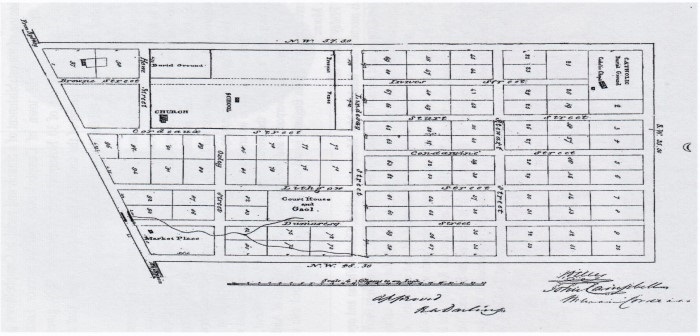Early Map of Campbelltown
Robert Hoddle's 1827 Plan of Campbelltown includes limits of church site and location of Church and School. It is the earliest map of Campbelltown. - Credit Campbelltown and Airds Historical Society

(Image sourced from Campbelltown and Airds Historical Society)
The Grand Glenlee
Glenlee, perhaps the grandest of Campbelltown's rural Georgian-style homesteads. It was erected about 1824 by William Howe, a veteran of the 1st Royal Scots Regiment, who arrived in the colony as a free settler in 1816. He was granted 3000 acres overlooking the Nepean River near present-day Menangle Park and became a local magistrate and keen horse breeder. Glenlee was known for its lush pastures, producing some of the best milk and cheese in the colony. Listen to David Milliken share his family's history of Dairy Farming at Glenlee.

(Image sourced from Nash Family Collection)
Campbelltown's First School
Much of the area now known as Glenfield was granted to James Meehan, the man who surveyed the entire Campbelltown district. He gained over 2,000 acres (800 hectares), named his estate Macquarie Field, and built himself a homestead known as Meehan's Castle. In 1820-22, Meehan rented this house out for use as an elite academy for boys; pupils included the son of Governor Macquarie. This was the first school in the area.

(Image sourced from Campbelltown City Library Local Studies Collection)
Building the foundations of the Township
St Peter's Church marks the genesis of Campbelltown, as the church, school and burial ground sites were marked out by Governor Macquarie when he founded the town of the 1 December 1820. St Peter' Church is the oldest building in town, it was completed in 1823. This was the only building in the township for many years. It is Campbelltown's first church and the earliest building still standing in Campbelltown CBD. This is the earliest available photo. If you are interested in discovering more about our local heritage buildings check out Heritage Items in Campbelltown.

(Image sourced from Campbelltown City Library Local Studies Collection)
The establishment of Denham Court House
Denham Court House, photographed from the air by Edward Searle in the 1940s. Built between 1812 and 1833, the substantial residence was designed by renowned architect, John Verge, for wealthy sea captain Richard Brooks. Denham Court was one of Sydney's most vibrant social centres of the 1820s and 1830s.

(Image sourced from National Library of Australia)